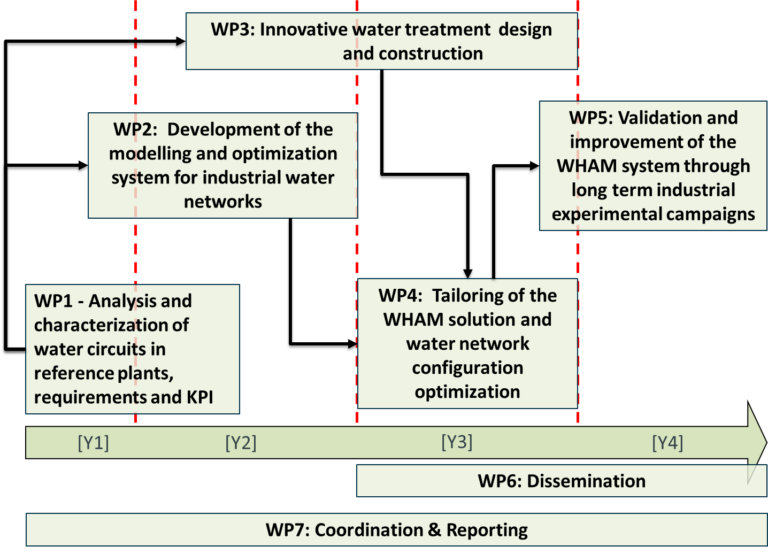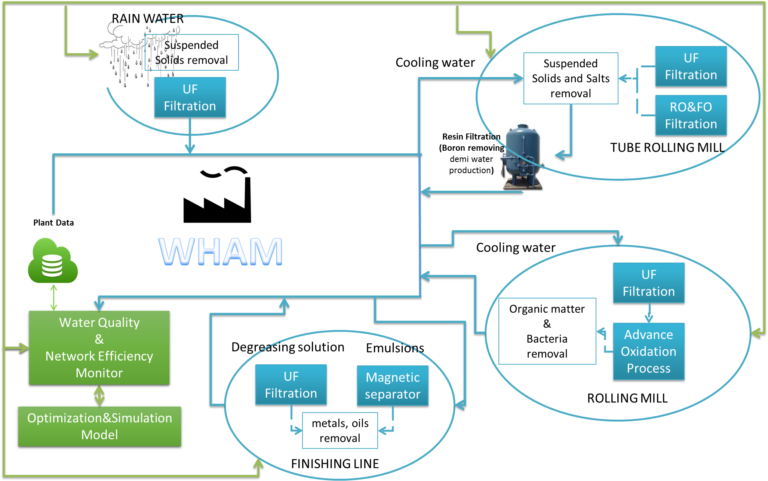1.1 Summary
The WHAM project aims to optimise water consumption in the steel manufacturing processes by means of a holistic solution combining a flexible on-line monitoring and optimisation platform and innovative water treatment technologies.
The project will approach the water and related energy management from two main points of view:
- Development of a system able to monitor and simulate the plant water network considering physical/thermal/chemical quality of the water acting as decision support system providing information on the current water network status, analyzing potential upgrades and its benefits
- Development of effective cleaning technologies both in term of water quality and management costs.
1.2 Objective
The overall objective of the WHAM project is to radically change the current water paradigm, by developing an innovative approach to improve the efficiency of the global water system reducing the water consumption, increasing the reusability by the adoption of innovative technologies.
The project aims to set-up a widely deployable methodology based on a customizable supervision system targeted to industrial water networks which are typically found in the steelworks. Moreover innovative water treatment will be tested in several use cases. Such system will implement diagnostic capabilities aiming at highlighting water losses and water systems malfunctioning by jointly achieving an efficient steelworks water circuit management.
Moreover WHAM aims at lowering the water intake minimizing the ecological foot print incrementing the recycling of water while assuring sufficient water quality for process conduction.
- a correct management of the different water sources, including rain water, depending on the requirements and operating conditions of each process;
- the minimization of the cooling water losses;
- the improvement of the energy efficiency of the water circuit by adjusting the operation mode of its units;
- the minimization of the freshwater consumptions, by jointly reducing the related costs in terms of energy and chemical additives and improving the overall environmental impact of the production process
- the increase of water reusabilty recycling back into the process current wastewaters such as the cleaning solutions through the adoption of innovative water treatments.
1.3 Structure

1.4 Use cases



